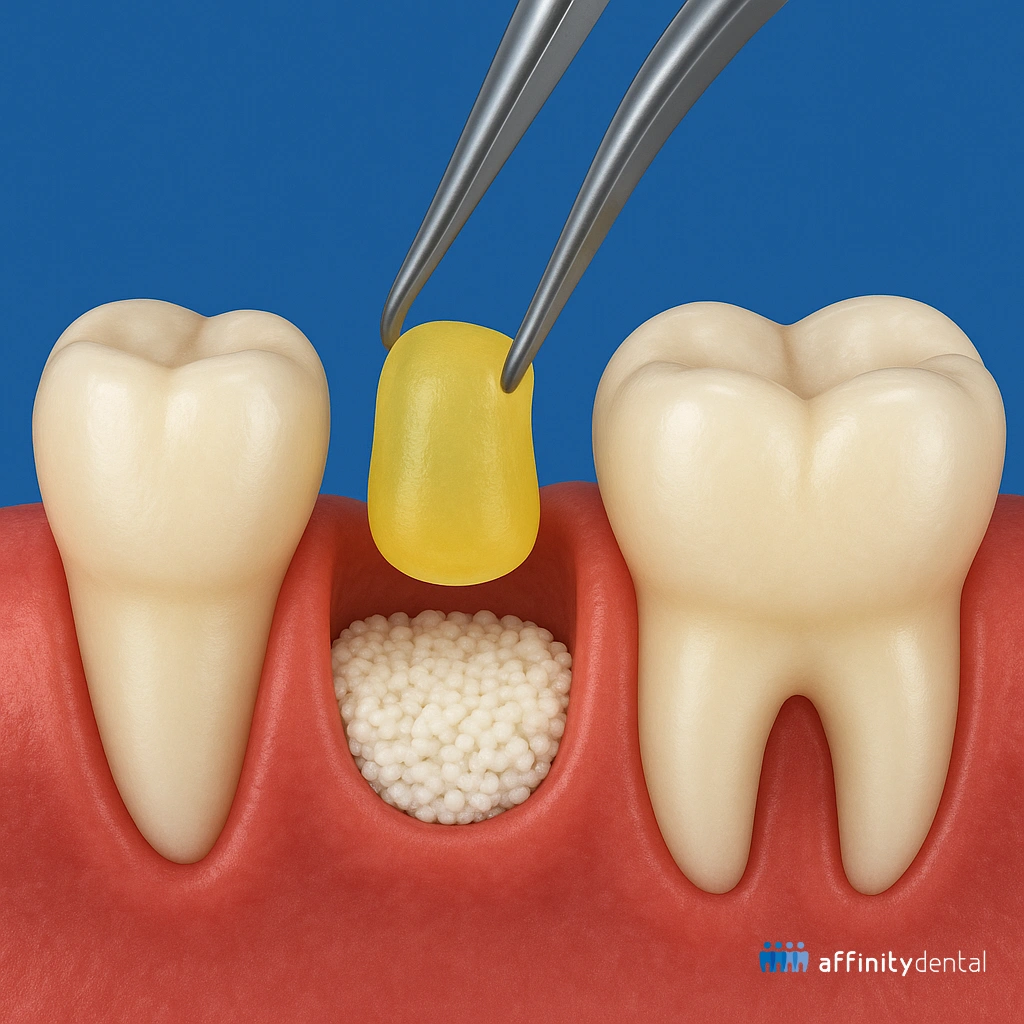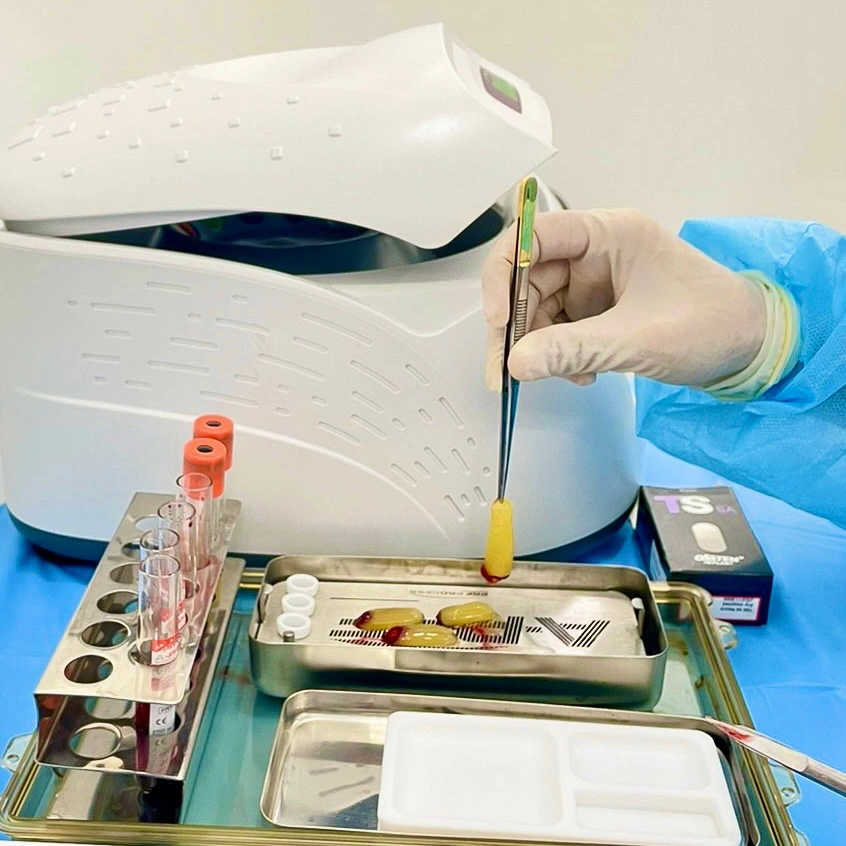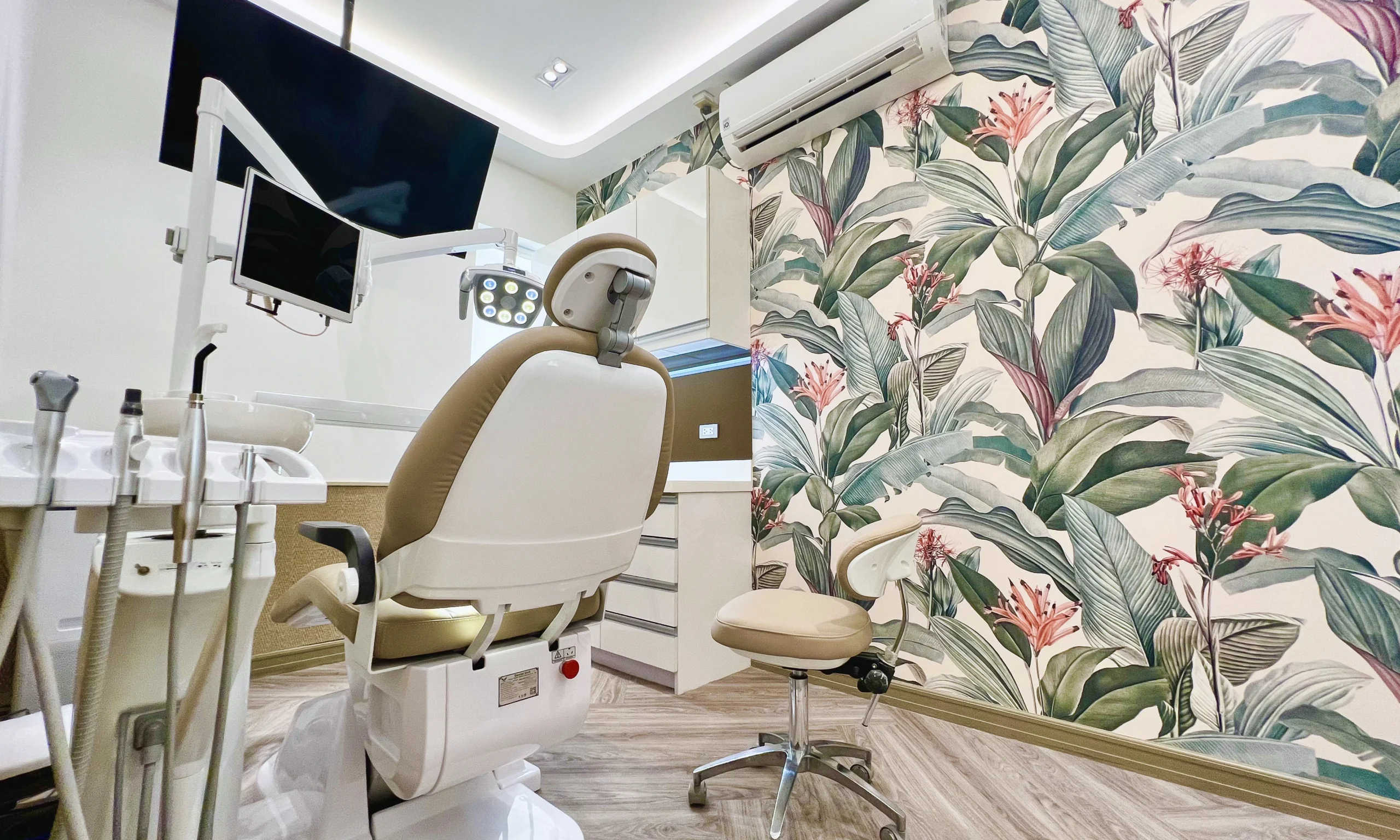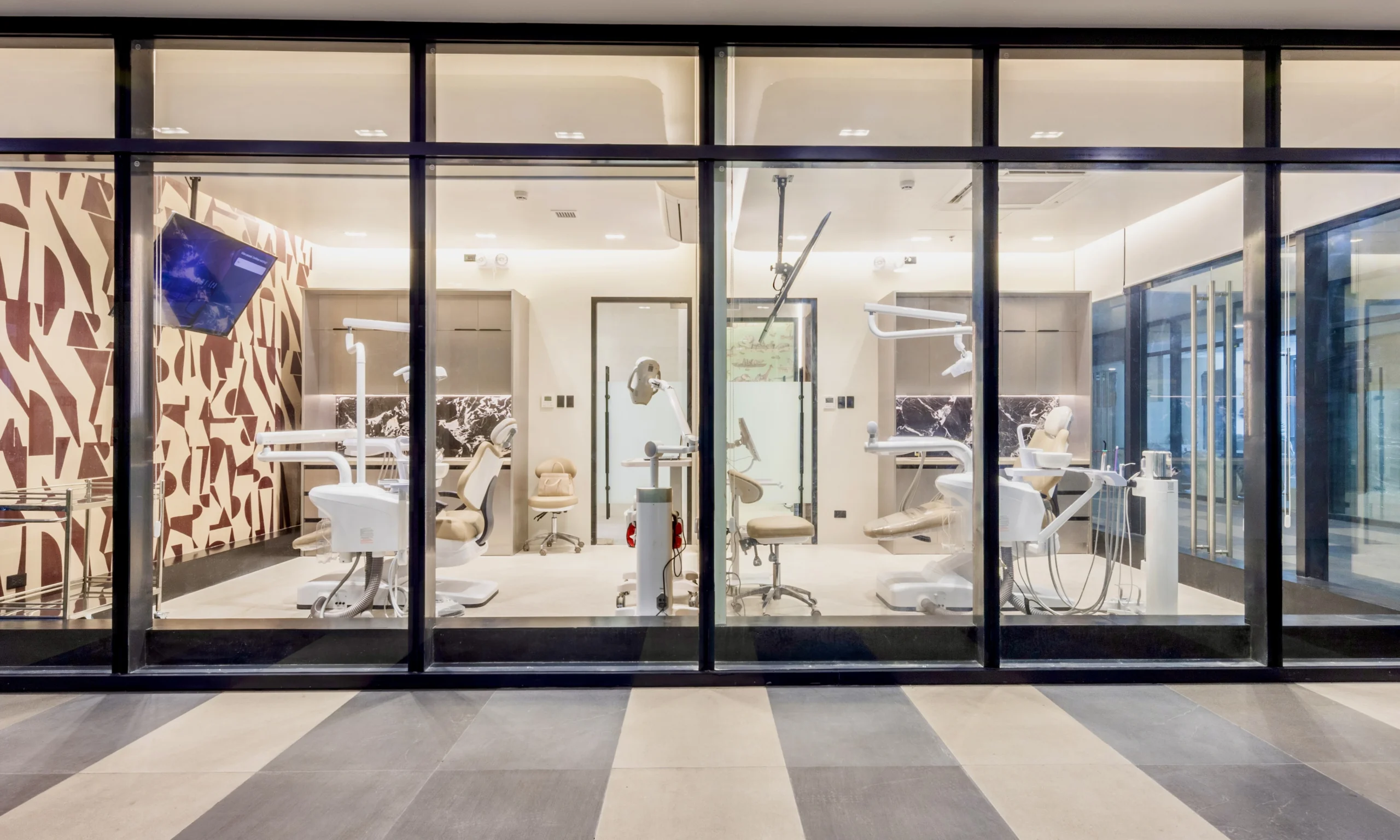
Platelet Rich Fibrin (PRF)
Natural Healing Support in Oral Surgery
When it comes to healing after oral surgery, nature often provides the best tools. One of the most advanced and effective ways to enhance healing and tissue regeneration is through a technology called Platelet Rich Fibrin. At Affinity Dental Clinics, we use Platelet Rich Fibrin (PRF) in the Philippines for various surgical procedures to accelerate healing, reduce complications, and improve outcomes for our patients.
PRF is a cutting-edge regenerative technique that uses your body’s own natural growth factors to support healing. Whether you’re having a dental implant, bone graft, wisdom tooth removal, or periodontal surgery, Platelet Rich Fibrin (PRF) helps your body heal faster and better—without introducing foreign substances.
As a leading provider of Oral Surgery services in the Philippines, Affinity Dental is proud to offer this innovation as part of our commitment to safe, ethical, and state-of-the-art care.
What Is Platelet Rich Fibrin (PRF)?
Platelet Rich Fibrin (PRF) is a concentrate of your own blood platelets and fibrin—a protein that plays a vital role in blood clotting and tissue regeneration. It is derived from a small amount of your blood, which is processed in a centrifuge to separate the platelets, white blood cells, and fibrin into a gel-like substance.
This biocompatible, autologous material is rich in:
• White blood cells
• Growth factors (such as PDGF, TGF-β, and VEGF)
• Cytokines
• Fibrin matrix
When applied to a surgical site, PRF acts as a natural scaffold that promotes cell migration, tissue regeneration, blood vessel formation, and faster healing—all while reducing the risk of infection, swelling, and complications.
How PRF Works in Oral Surgery
At Affinity Dental Clinics, we use Platelet Rich Fibrin (PRF) during or after surgical procedures to:
• Enhance bone regeneration after grafting or implant placement
• Reduce post-operative pain and swelling
• Lower the risk of infection and delayed healing
• Promote angiogenesis (new blood vessel formation)
• Improve graft stability and integration
PRF is particularly beneficial in procedures such as:
• Bone grafts and Socket Preservation
• Sinus lifts
• Dental implant placement
• Periodontal surgery for gum defects
• Treatment of peri-implantitis
• Management of chronic non-healing wounds in the mouth
Because PRF is derived entirely from your own blood, it is 100% natural, carries no risk of allergic reaction, and is safe for nearly all patients.
Why Choose Affinity Dental Clinics for PRF-Enhanced Oral Surgery?
At Affinity Dental Clinics, Oral Surgery is not just another service—it’s one of our core specialties. Our team of formally trained Oral Surgeons are highly experienced in integrating Platelet Rich Fibrin (PRF) into surgical protocols to deliver faster healing and better long-term results.
All our clinics are equipped with:
- PRF centrifuge systems and sterile blood handling tools
- Digital X-rays for low-radiation diagnostics
- Cone Beam CT Scans (CBCT) for detailed 3D visualization of bone and tissue
- Sterile treatment rooms that meet hospital-grade surgical standards
These technologies, combined with our advanced infection control practices, ensure that your procedure is both effective and safe.
Surgical anxiety? No problem. We offer Conscious Sedation administered by a board-certified Anesthesiologist for patients who need added comfort during oral surgery. This conscious sedation technique keeps you relaxed, pain-free, and at ease while still awake enough to respond if needed.
How Is PRF Prepared and Applied?
Here’s a step-by-step overview of how Platelet Rich Fibrin (PRF) is used during your procedure:
A small sample of your blood is drawn (typically 10–20 ml), similar to a routine blood test.
The blood is immediately spun in a PRF centrifuge for several minutes. This separates the blood into layers—red blood cells at the bottom, platelet-rich fibrin in the middle, and plasma at the top.
The middle layer is collected and shaped into a gel or membrane form, depending on the clinical need.
The PRF material is then applied directly to the surgical site—whether it’s a bone graft, extraction socket, or implant area. It begins to work immediately, releasing growth factors and accelerating healing.
Because the entire process uses your own blood, there is no risk of disease transmission or immune reaction.
The Benefits of PRF for Patients
Using Platelet Rich Fibrin (PRF) provides numerous benefits, including:
PRF enhances tissue regeneration, allowing wounds to close more quickly and reducing downtime after surgery.
By modulating inflammation and encouraging blood flow, PRF can minimize post-operative discomfort.
Because PRF is made from your own blood, there are no artificial chemicals or risk of rejection.
PRF supports the formation of new bone and connective tissue, improving the long-term success of implants, grafts, and other surgical procedures.
PRF promotes better healing and reduces the likelihood of dry socket, infection, or delayed healing—especially after extractions or complex surgeries.
Who Is a Good Candidate for PRF?
Most patients undergoing oral surgery are candidates for PRF, particularly if they are:
• Having tooth extractions, especially wisdom teeth
• Undergoing bone grafting or sinus augmentation
• Recovering from soft tissue surgeries
• Looking to minimize downtime and enhance healing
• Managing chronic inflammation or poor wound healing
PRF is safe for patients of all ages and is particularly beneficial for individuals with diabetes, smokers, or those with a history of slow healing.
Platelet Rich Fibrin in Medical Science
Beyond Dentistry: PRF in Regenerative Medicine and Surgical Healing
While Platelet Rich Fibrin (PRF) is widely used in modern dentistry—particularly in oral surgery and implantology—it is important to understand that its roots and broader applications stem from regenerative medicine. PRF has gained recognition across various medical specialties for its ability to accelerate healing and support natural tissue regeneration using the patient’s own blood.
What Makes PRF Unique in Medicine?
PRF is a second-generation platelet concentrate derived entirely from a small sample of the patient’s blood. Once spun in a special centrifuge, the blood separates into a fibrin-rich layer loaded with platelets, leukocytes (white blood cells), and growth factors. Unlike older platelet concentrates like PRP (Platelet Rich Plasma), PRF does not require anticoagulants or additives—making it more natural and biocompatible.
This natural fibrin matrix works like a biological scaffold, slowly releasing growth factors such as:
• TGF-β (Transforming Growth Factor Beta)
• VEGF (Vascular Endothelial Growth Factor)
These substances play a key role in stimulating angiogenesis (formation of new blood vessels), collagen production, and cellular regeneration, which are critical to wound healing.
Medical Applications of PRF Beyond Dentistry
PRF has been successfully applied in several branches of medicine, including:
Used in tendon repairs, bone grafting, and joint surgeries, PRF promotes faster healing and reduces inflammation. It is particularly helpful in rotator cuff injuries and post-ACL surgery rehabilitation.
Plastic surgeons use PRF to support skin rejuvenation, minimize scarring, and enhance graft take in procedures such as facelifts, hair restoration, and wound repair. The slow-release growth factors help promote smoother healing and tissue regeneration.
Some studies explore the use of PRF membranes in spinal surgeries and cranial procedures to improve tissue recovery and prevent complications such as cerebrospinal fluid leaks.
Chronic ulcers and diabetic foot wounds have shown improved healing outcomes when treated with PRF membranes. Its antimicrobial and angiogenic properties make it a valuable adjunct in non-healing wounds.
In sinus lift procedures and nasal reconstruction, PRF enhances mucosal healing, reduces infection risk, and supports graft integration.
Why PRF Matters for Dental Patients
The cross-disciplinary success of PRF in medicine reinforces its credibility, safety, and effectiveness. At Affinity Dental Clinics, we apply the same science-backed approach to oral surgeries—whether for socket preservation, bone grafts, or implant placement—using PRF to enhance outcomes, reduce healing time, and support the body’s natural ability to repair itself.
Platelet Rich Fibrin (PRF) – Frequently Asked Questions
What is Platelet Rich Fibrin (PRF)?
PRF is a natural concentrate of your own blood, rich in platelets, growth factors, and white blood cells. It is used to accelerate healing and improve tissue regeneration after oral surgery, tooth extraction, bone grafting, or dental implant placement.
How is PRF different from PRP (Platelet Rich Plasma)?
Unlike PRP, PRF does not require anticoagulants or additives. PRF forms a natural fibrin matrix that releases growth factors more slowly, providing sustained healing support. PRF is also considered easier to prepare and more biocompatible.
Is PRF safe?
Yes. PRF is 100% autologous, meaning it is made from your own blood. Since no additives or foreign substances are used, the risk of allergic reactions or infection is extremely low.
What is PRF used for in dentistry?
At Affinity Dental Clinics, PRF is commonly used for:
• Tooth extraction sites to promote faster healing
• Socket preservation to prepare for future implants
• Bone grafting procedures
• Sinus lift surgery
• Accelerating healing after implant placement
• Gingivectomy and soft tissue procedures
How is PRF prepared?
A small amount of your blood is drawn and placed in a special centrifuge. This spins the blood to separate the platelets and fibrin into a jelly-like layer. The resulting PRF membrane or clot is then placed in the surgical site to support healing.
Does the PRF procedure hurt?
The process is minimally invasive. Drawing blood is similar to a routine lab test. The application of PRF during surgery does not add any significant discomfort and often results in reduced post-operative pain and swelling.
How does PRF help with healing?
PRF acts like a natural scaffold, rich in growth factors that help stimulate tissue regeneration, blood vessel formation, and cell repair. This reduces inflammation, supports bone regeneration, and promotes quicker soft tissue healing.
Can anyone receive PRF treatment?
Most healthy patients are good candidates for PRF. However, those with certain blood disorders, active infections, or on specific medications may need further evaluation.
Is PRF necessary for my oral surgery?
While not always mandatory, PRF can significantly improve healing outcomes and reduce complications. Your dentist or oral surgeon at Affinity Dental Clinics will advise if PRF is recommended for your specific case.
Are there additional costs for PRF?
Yes, PRF may incur an additional charge as it requires specialized equipment and preparation. However, many patients find it a worthwhile investment for better healing and comfort after surgery.
How long does PRF stay in the surgical site?
PRF is gradually absorbed by the body over several days. Its fibrin matrix releases healing factors for up to 7–10 days, supporting natural regeneration during the critical first phase of healing.
Is PRF available in all Affinity Dental Clinics?
Yes. Platelet Rich Fibrin (PRF) preparation is available in major Affinity Dental branches equipped for oral surgery and implantology. Please contact your preferred branch to confirm availability.

Book Your PRF Consultation Today
When it comes to oral surgery, healing is just as important as the procedure itself. At Affinity Dental Clinics, we believe in using the best of science and nature to help you recover faster, more comfortably, and with better long-term results.
Whether you’re getting implants, extractions, or grafts, ask us how Platelet Rich Fibrin (PRF) in the Philippines can support your treatment.
Call us today or 📩 book your consultation online at any of our clinics in Makati, BGC, Alabang, Ortigas, Parañaque, or Cebu. Let our Oral Surgery experts guide you through a safer, smarter path to healing—powered by your body’s own potential.
Let us help you preserve what matters most—your health, your smile, and your future.
Book an Appointment
One moment, your message is being sent...
Please wait for the confirmation message before going back or closing your browser.
Sub heading
Content Place Here without Image

Content Continuation
Sub heading

Content Place Here without Image
Content Continuation
Sub heading

Content Description
Sub heading

Content Description Numbered
Intro Paragraph
Additional (Optional)
- Items
- Items
- Items
- Items
Component for Direct Content without image
Intro Paragraph
2nd Pragraph Optional
Closing paragraph
Component for Steps Content without image
Intro Paragraph
Text Description
- This list is optional, if the content does not have bulleted items remove the "ul and /ul"
- Items
- Items
Outro Paragraph (Optional)
Component for Steps Content with image

Intro Paragraph
Text Description
- This list is optional, if the content does not have bulleted items remove the "ul and /ul"
- Items
- Items
Outro Paragraph (Optional)
Other design for itemized content
Intro (copy this if there are more paragraphs)
Text Description
Table Title No Image
| Column Heading | Column Heading | Column Heading | Column Heading | Column Heading |
|---|---|---|---|---|
| Row Data | Row Data | Row Data | Row Data | Row Data |
Table Title with Image

| Column Heading | Column Heading | Column Heading | Column Heading | Column Heading |
|---|---|---|---|---|
| Row Data | Row Data | Row Data | Row Data | Row Data |
Frequently Asked Questions
Answer
Answer
Answer






